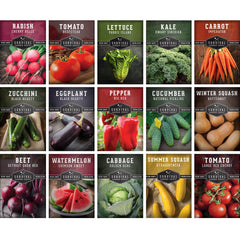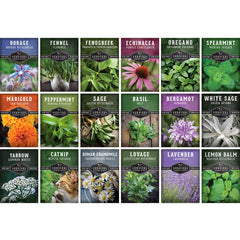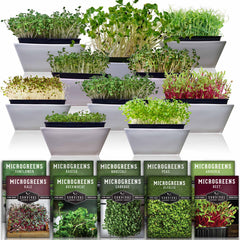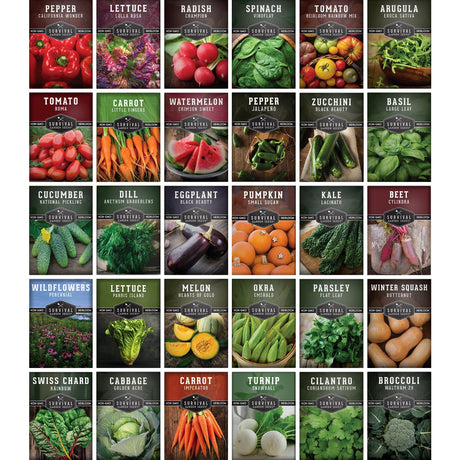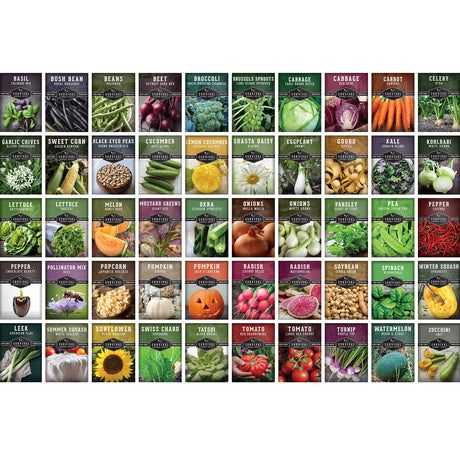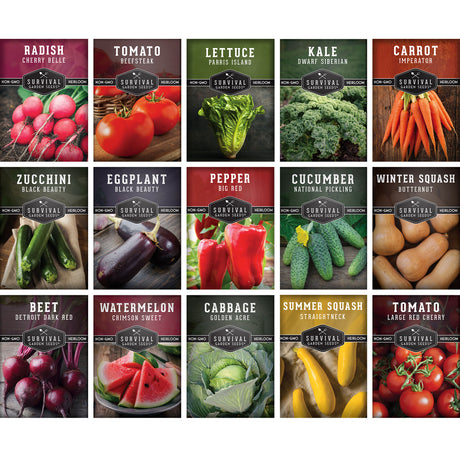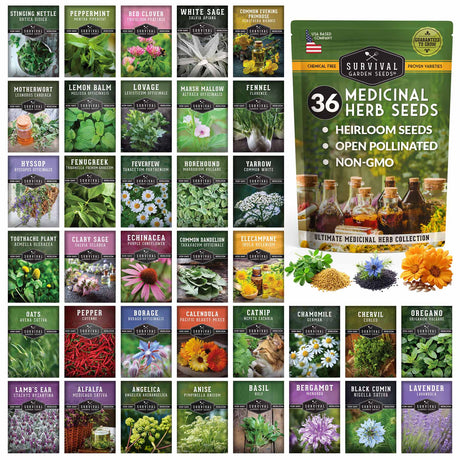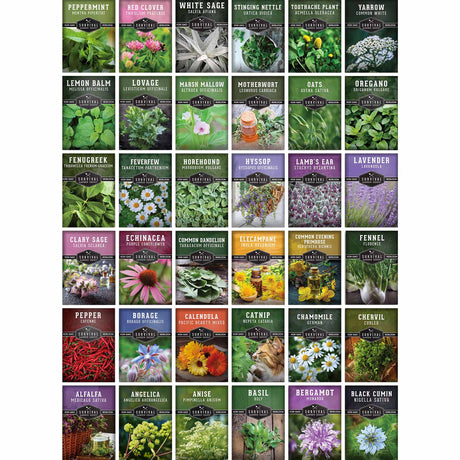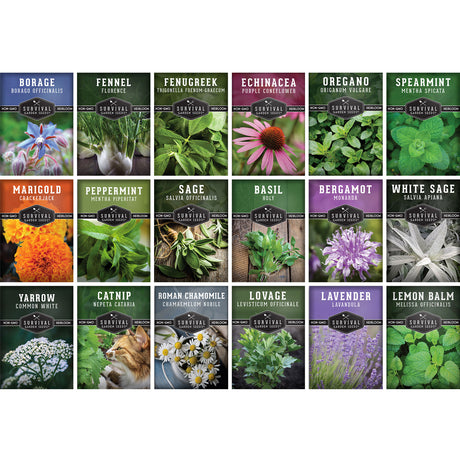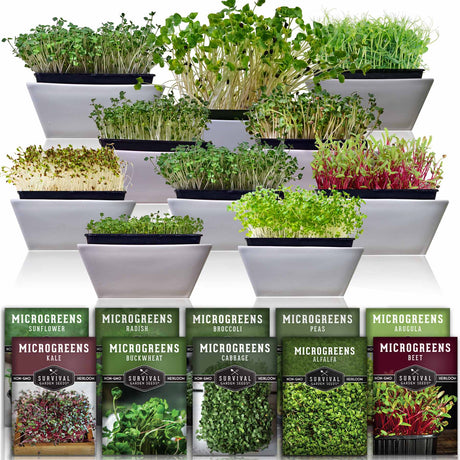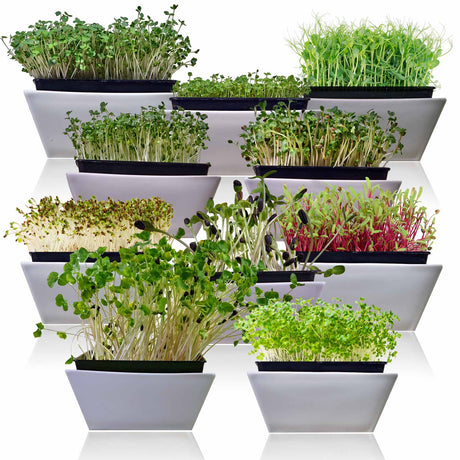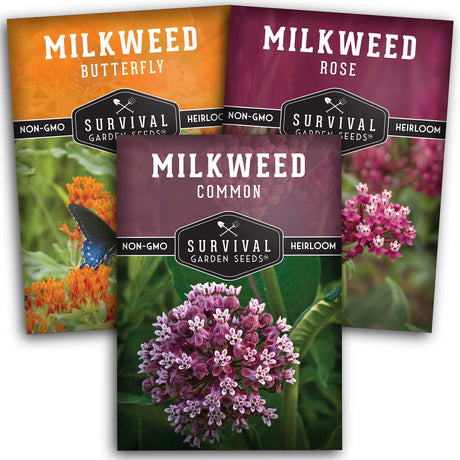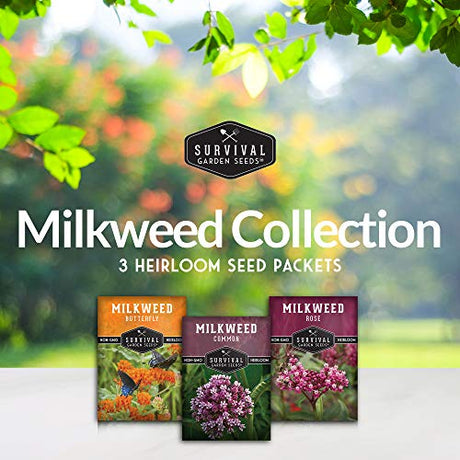Did you know we sell Alpine strawberry seeds? When I first heard we’d be carrying any sort of strawberries, I was shocked, but also delighted. My experiences with growing strawberries were always standard garden varieties from runners or bareroot plants. The rare wild strawberry I’ve enjoyed was almost always a solitary treat to be enjoyed on its own. I’m excited to share with you what I’ve learned about these special strawberries, including how easy they are to grow from seed.
Understanding Strawberry Seeds

You may have been told that the pips on a strawberry aren’t seeds. Technically, this is true—those pips are tiny fruits called achenes. However, that definition deserves more explanation for those of us without a background in botany. An achene is a small, dry fruit with a single seed inside. The fruit is hard and doesn’t open when fully mature. An example is a sunflower seed. The hull or shell of a sunflower seed is actually a fruit wall. The actual seed is inside.
What’s the Difference Between Garden Strawberries and Alpine Strawberries?
Garden strawberries (Fragaria × ananassa) are the common strawberries that you’ll find at the grocery store. They were originally bred in France in the 1750s, a cross between Fragaria virginiana from eastern North America and Fragaria chiloensis, from the west coast of both American continents. The Alpine strawberry isn’t a direct parent of these strawberries, but it has played a role in breeding specific varieties, especially when traits like intense flavor, early fruiting, or resilience in varied conditions are important.

Garden strawberries are typically grown from runners rather than seeds. Although they are all hybrids, there are some very old, stable garden strawberry varieties that are referred to as “heirloom” due to their ability to produce seeds that match the parent plant.
Alpine strawberries (Fragaria vesca), sometimes known as woodland strawberries, wild strawberries, or European strawberries, occur naturally in Asia and Europe and were introduced into the Americas. This berry was widely cultivated in Europe for centuries before the garden strawberry was developed. Although they are only about a half-inch in size, these berries have an incredible sweet flavor that more than makes up for their small size.
Alpine strawberry plants are simple to care for. Unlike garden strawberries, most Alpine varieties produce few to no runners, instead growing in well-behaved compact clumps that won’t take over the garden. They’re perfect for containers, small spaces, and as a ground cover in rocky spaces or along foot paths. Alpine strawberries also grow on upright stalks instead of sitting directly on the ground like garden strawberries. Alpine strawberries started from seed may take months to mature and are more reliably productive in the second year, but the wait is worth it!
Planting Alpine Strawberry Seeds
We carry the ‘Regina’ alpine strawberry variety. It is a compact, runnerless plant that produces exceptionally sweet, fragrant ruby-red berries from early summer until the first frost. Its compact size and prolific fruiting make it a popular choice for gardeners seeking flavorful strawberries without the spreading nature of traditional varieties.
Alpine strawberry seeds are tiny, and handling them can be a challenge, so try using a drop seeder, seed dibber, or mix the seeds with sand and sprinkle them from a salt shaker. Cold stratifying the seeds in the fridge for 3-4 weeks can boost germination, especially if you're starting them early in the season, though it’s not strictly required.
These seeds require light to germinate, so press them gently onto the surface, no more than ⅛ inch into the soil. Keep the soil consistently moist and warm. They should sprout in two to four weeks. Transplant outside into containers or directly into the garden once two sets of true leaves develop and after the last frost.
If you want to add some fruit to your garden, edge a garden path, or grow an edible groundcover, Alpine strawberries are a charming and delicious choice! They’re a rare garden treat that’s easy to love, easy to grow, and a joy to harvest. Try adding them to your garden this year so you can experience this delightful strawberry for years to come.




